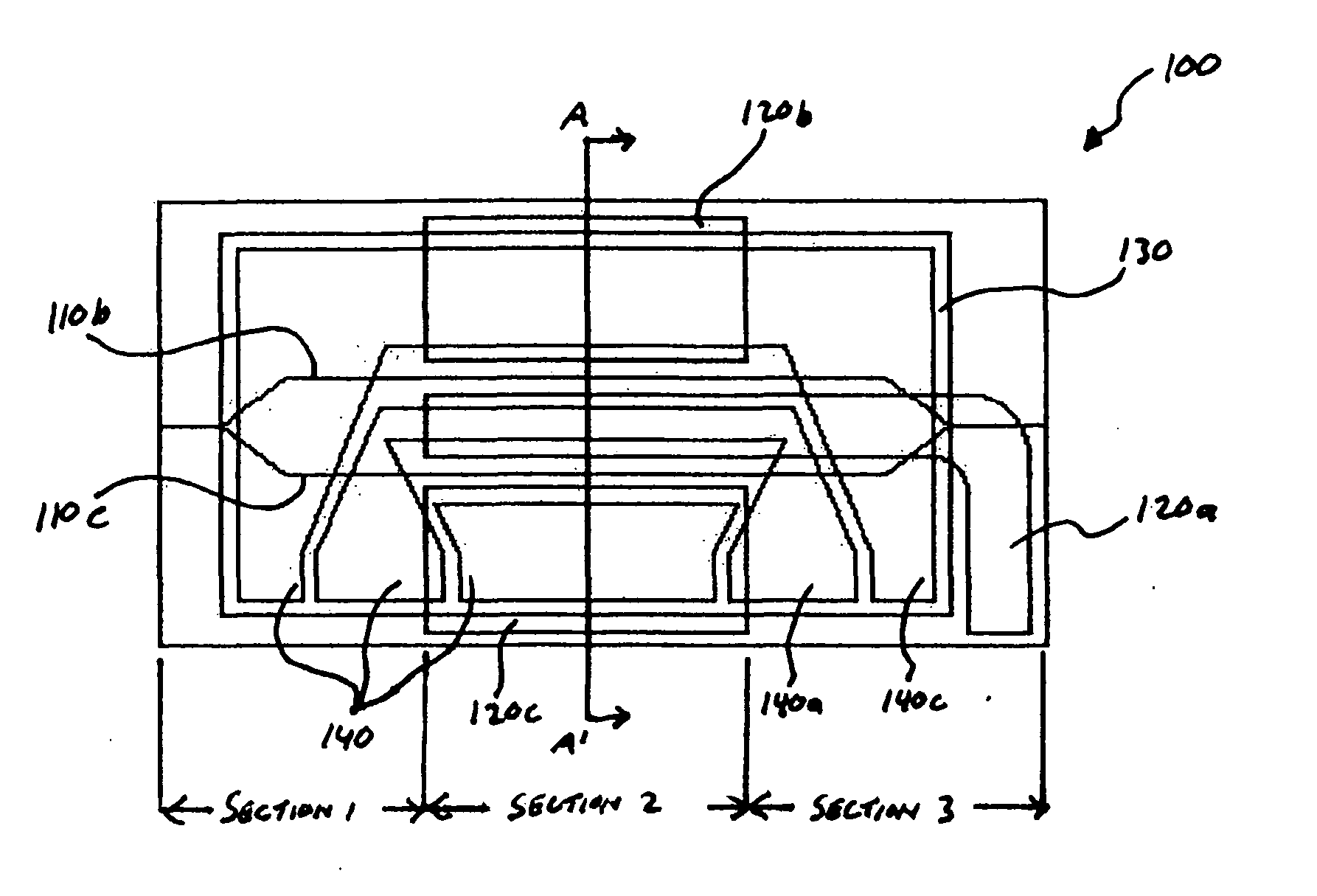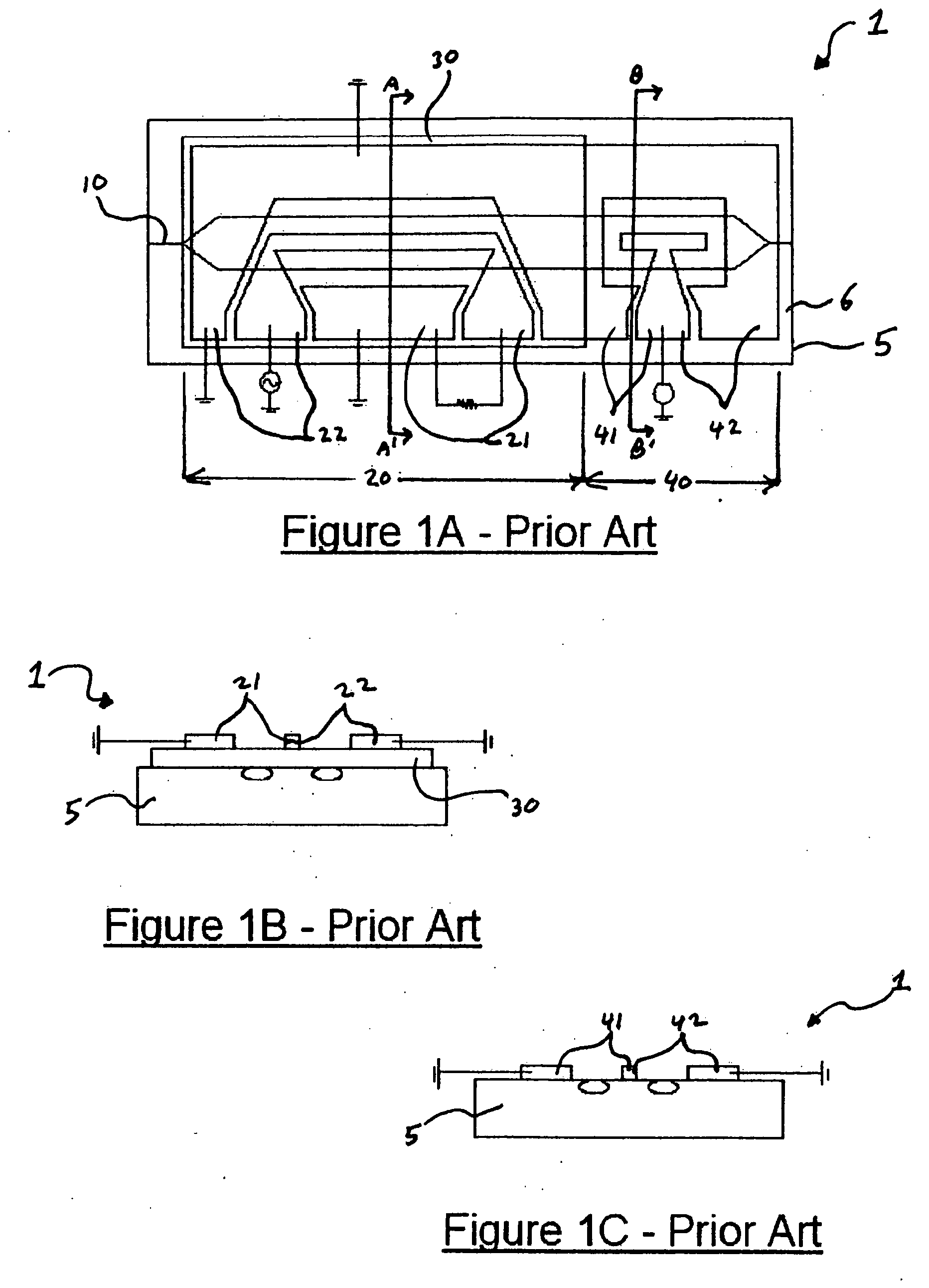Electro-optical device
a technology of optical devices and optical buffer layers, applied in the field of optical buffer layers, can solve the problems of reducing system efficiency, long-term (bias) drift, and inability to avoid the buffer layer underneath the bias electrode, so as to reduce the overall length of the device, eliminate the effect of long-term drift effect and improve design efficiency
- Summary
- Abstract
- Description
- Claims
- Application Information
AI Technical Summary
Benefits of technology
Problems solved by technology
Method used
Image
Examples
Embodiment Construction
[0022] Referring now to FIG. 2A, there is shown an electro-optical device 1 having a substrate 5 with an embedded optical waveguide 10 relative to the corresponding top surface 6. The optical waveguide 10 is divided into 3-sections. In Section 1, the optical waveguide 10 includes a linear portion having a single optical pathway 10a, which forks into two parallel optical pathways 10b, 10c. Section 2 includes the two parallel optical pathways 10b, 10c traversing laterally across the substrate 5 relative to the top surface 6. In Section 3, the parallel optical pathways 10b, 10c converge to reform a single optical pathway 10d. The substrate 5 is formed of a suitable material such as Libnium Niobate (LiNbO3). The optical waveguide 10 is formed of a suitable material having an optical field that is sensitive to, or can be manipulated by, and electromagnetic field. Though FIG. 2A shows an x-cut LiNbO3, the present invention may be applied to other material cuts as well.
[0023]FIG. 2B shows...
PUM
| Property | Measurement | Unit |
|---|---|---|
| thickness | aaaaa | aaaaa |
| thickness | aaaaa | aaaaa |
| thickness | aaaaa | aaaaa |
Abstract
Description
Claims
Application Information
 Login to View More
Login to View More - R&D
- Intellectual Property
- Life Sciences
- Materials
- Tech Scout
- Unparalleled Data Quality
- Higher Quality Content
- 60% Fewer Hallucinations
Browse by: Latest US Patents, China's latest patents, Technical Efficacy Thesaurus, Application Domain, Technology Topic, Popular Technical Reports.
© 2025 PatSnap. All rights reserved.Legal|Privacy policy|Modern Slavery Act Transparency Statement|Sitemap|About US| Contact US: help@patsnap.com



